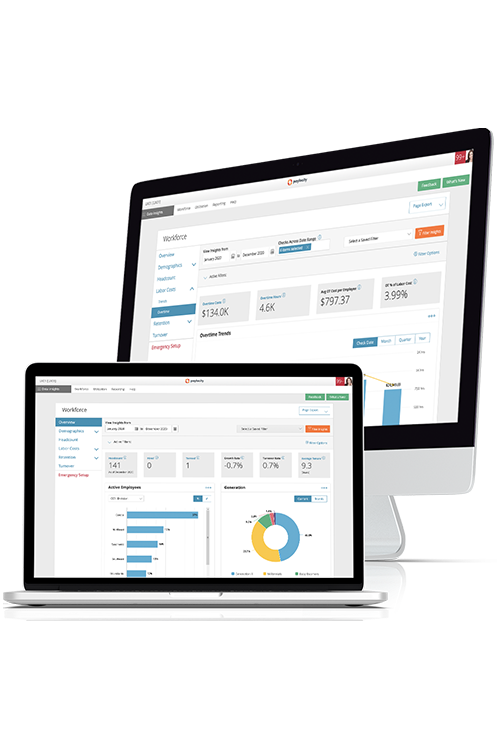resources
Three Trends Shaping the Future of Work in 2023
November 02, 2022
In a post-pandemic workplace, employees will look for HR to level the playing field across space, time, and role.
Blog Post

Predicting future workforce trends was hard even in “precedented” times.
But even after learning many valuable lessons throughout the pandemic, organizations are still discovering new challenges. Mass adoption of remote work, recession fears, and a competitive labor market are all contributing to evolving workplace expectations that organizations must adapt to.
One thing is clear: HR will continue to have an important role in shaping the future of work. In a recent survey conducted by Executive Networks, 93% of CHROs in Global 1000 companies agree that the impact of their HR teams on business results is just as important as that of the finance team.
As organizations adapt to a post-pandemic work environment, HR professionals may find themselves facing new as well as existing biases within their company culture. Employees who are treated differently based on when or how they work may feel siloed and underappreciated, leading to or exacerbating employee burnout.
With more worker classifications, such as hybrid or essential job roles, along with the ongoing need to facilitate diversity of thought and experience, how do HR leaders ensure that all employees feel their unique needs are being met?
During a PCTY Talks podcast, Jeanne Meister, Executive VP at Executive Networks, discussed some key findings from their global survey. She noted a shift in CHRO thinking, as well as three trends that will influence the future of work moving forward.
The Future of Work and The Great Reevaluation
In today’s increasingly dispersed, multi-generational workforce, employees aren’t asking “how much?” They’re asking when, where, why, and if.
“While so many companies are talking about the Great Resignation, we’re talking about the Great Reevaluation as employees reevaluate where they work, why they work, when they work, and if this is the employer they want to continue with,” Meister said on the podcast. “We think this is really an inflection point for a lot of companies to dive deeper.”
According to the Executive Networks survey, CHROs are diving deeper in five areas:
- Attracting and retaining talent
- Improving diversity, equity, inclusion, and accessibility (DEIA)
- Supporting employee well-being and mental health
- Managing remote and hybrid workforces
- Developing leadership
To ensure their culture supports all five areas, a growing number of companies are making "future of work" a pillar of their HR operating model, alongside talent acquisition, learning and development, and total rewards.
Meeting the expectations of job candidates and current employees will require an increasing focus on employee centricity. For HR leaders and teams, however, ensuring equitable treatment across different employee roles and scenarios is proving difficult.
Three Workforce Trends That Will Impact HR in 2023
During our discussion, Meister identified the findings in the CHRO study that most surprised her. We discussed three emerging workforce trends and what they mean for HR:
- Addressing proximity bias
- Ensuring equity for frontline and hourly workers
- Holding leadership accountable for diversity and inclusion
Let’s dive into these three future of work trends and what HR pros can do to prepare and adapt.
1. Addressing Proximity Bias
As hybrid work environments continue to evolve, employees who spend more time in the office may have—or be perceived to have—more opportunities than offsite or remote workers for mentoring, stretch assignments, and ultimately, promotions.
Meister acknowledges that proximity bias is real. “This is a big fear among hybrid workers. How is this new model going to impact their career long term?”
Building connections between employees in different locations and time zones is virtually impossible without technology. But employees need more than video calls and quick chats. One positive side to the pandemic is that it stimulated rapid advances in HR technology with increased emphasis on employee connection.
Continuing to bridge the gap between onsite, remote, and hybrid workers will be a critical recruitment and retention strategy in the coming year. And one way to do this is through an integrated HR and payroll software platform that connects employees through digital communities, making communication and collaboration easier and more engaging.
For example, clients implementing Paylocity’s social hub, Community, have seen significant increases in employee engagement and peer recognition. Furthermore, companies using Community show higher employee sentiment and overall Modern Workforce Index (MWI) scores.
All workers want to know that they are seen, heard, and valued. By leveraging technology, HR can keep physical distance from becoming a barrier to employee success and retention.
2. Ensuring Equity for Frontline and Hourly Workers
Mind the gap! While salaried employees see an opportunity gap between remote and office workers, imagine how onsite hourly employees feel. With limited flexibility of where and when they work, hourly employees are looking for benefits customized to their way of working.
“When we talk about the future of work, most of the emphasis has still been on knowledge workers,” Meister says. “Not enough attention has been paid to hourly workers and frontline workers. And I think we’ve realized just how essential these essential workers are.”
One technology-enabled benefit that helps bridge that gap is on-demand pay. Providing earned wage access can reduce the stress of unexpected expenses and helps every employee—hourly or salaried—feel a sense of financial security.
Companies offering on-demand pay have noted another advantage: a boost in employee engagement.
“We have many employees who use On Demand Payment for emergencies, whether it’s an issue with their vehicle, rent, etc.,” says Paylocity client Robyn Klawitter, SVP of Human Resources for Mountainside Fitness. “The positive impact has been astronomical and has differentiated our company in recruiting and retention.”
Meister sees flexible pay schedules as a logical outgrowth of other consumer-based technology and a benefit that can reduce financial stress for employees.
“If we can shop on demand and listen to movies and music on demand and bank on demand, why do we still get paid every two weeks?” she asks.
3. Holding Leadership Accountable for DEIA
Most businesses today are sitting on a wealth of valuable employee information. While HR professionals use data every day to guide decisions, organization — especially the C-Suite — are stepping back and looking at several key HR metrics to evaluate their human capital efforts overall.
But Meister suggests that companies are not extracting as much meaning from their HR analytics as they could. She recommends ways robust reporting and analysis can help organizations better ensure every employee feels valued and heard.
“A lot of people are raising their hand saying, yes, I’m regularly doing employee sentiment surveys,” Meister explains. “But the follow-up question is, are you segmenting those surveys so that you’re really understanding the personalized needs of your workers?”
Data is especially important for tracking an organization’s progress and commitment toward diversity, inclusion, equity, and accessibility (DEIA). When powerful people analytics are integrated across the HR and payroll platform, leadership can easily see—and be held accountable for—key employee trends. Demographics like ethnicity, generation, legal gender, and gender identity become more meaningful in the full context of the employee lifecycle, from recruiting and onboarding practices to compensation and promotion.
Today, organizations are shifting their mindset away from launching new stand-alone initiatives to weave DEIA principles throughout their company’s values and culture. Richer data makes this possible.
Meister says, “We’re not creating another training program for it [DEIA.] We’re not creating another vision statement for it. We’re making it truly accountable [for our leaders] to live up to in terms of hiring, developing, and promoting a more diverse workforce.”
How to Prepare for the Future of Work
A survey by Gartner identified future of work as one of the top five priorities for HR leaders in 2023. In addition to creating compelling experiences for employees, CHROs and employees will be looking to HR teams to create more fair and equitable experiences.
While accountability for workforce equity may fall on leadership, the responsibility for meeting employee expectations generally falls squarely on the shoulders of HR. From recruitment to learning and development to compensation, HR helps connect the dots throughout an employee’s entire career.
As we enter a new year and continue to adjust to a complex post-pandemic workplace, we need to be cautious that new—and existing—biases are addressed openly and honestly.
“We really need to do a better job of appreciating all segments of our workers,” Meister says. “The future of work is for all workers.”
Fortunately, HR professionals looking for better ways to prepare for the future of work can leverage today’s modern human capital management (HCM) solutions to level the playing field across space, time, and job role.
Get more insights about key trends impacting the future of work in our podcast episode, “CHRO’s Perspective on the Future of Work with Jeanne Meister.”
By Shari Simpson, Senior Manager, Thought Leadership

Shari Simpson
Senior Manager Thought Leadership
Paylocity






